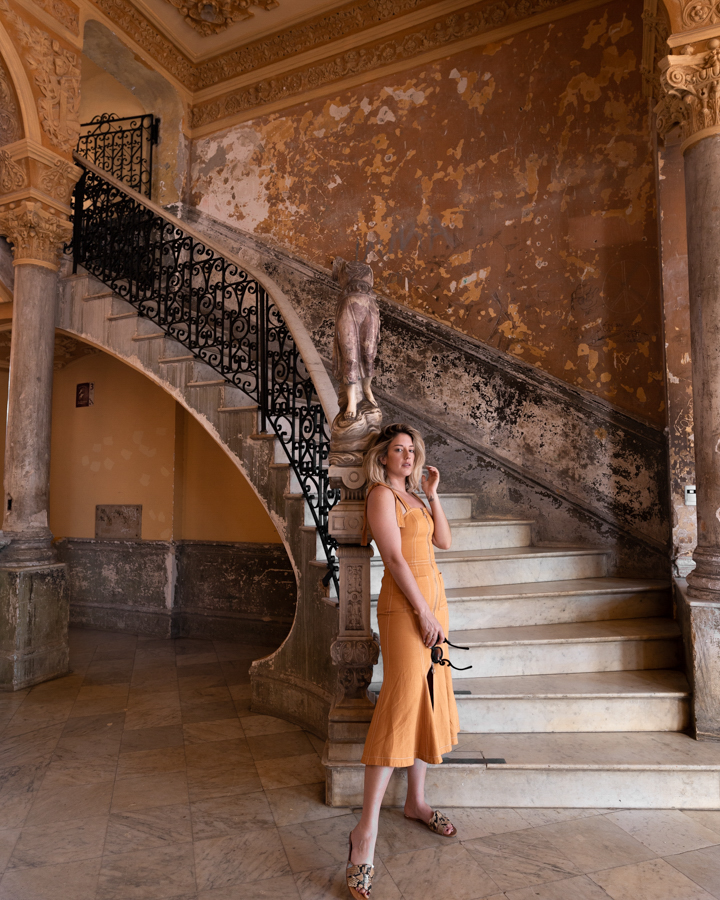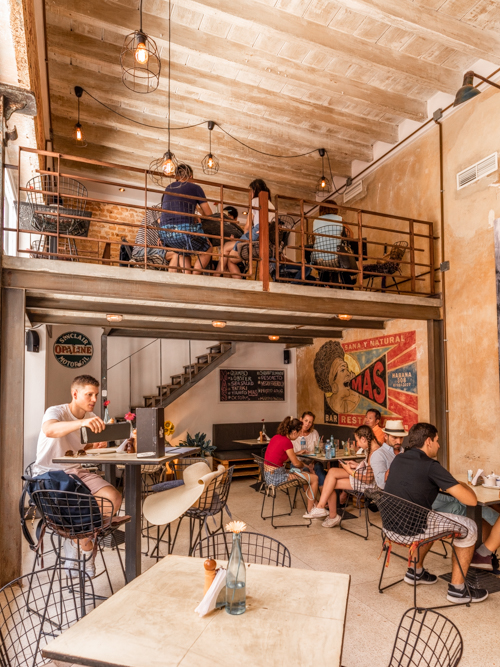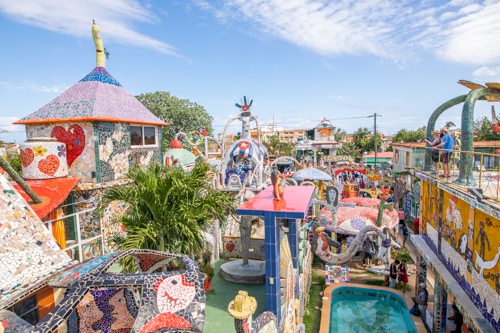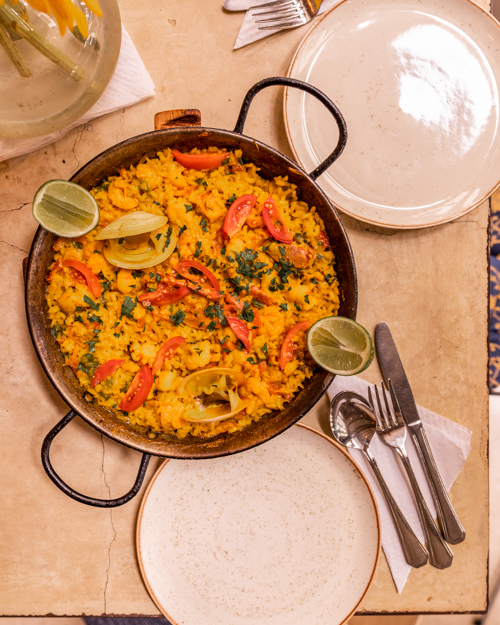The warm Caribbean sun seeped into my body as I stepped out of the air-conditioned restaurant. Full of seafood paella so tasty that I’d literally scraped it from the bottom of the pan and one-too-many mojitos, I started to walk (maybe a littttle unsteadily) down the cobblestone streets towards my hotel in a happy daze, my boyfriend bracing me with a hand on the small of my back. An old man, skin dark and leathered from the sun, nodded as we passed, exhaling smoke from his cigar. The sweet scent of tobacco lingering in the air made me think of my father.
“I should bring him back a few cigars,” I thought. “He’d like that.”
My father is something of a cigar aficionado and it was because of him that my family and I first visited Havana, Cuba, a decade ago. This time around, things were different. Hints of an economic revival were in the air and, leading up to the city’s 500th birthday in November, the government had started complex renovation work on some of Old Havana’s neglected buildings. WiFi, cellular data, and air conditioning have all become more prevalent in this part of town, too. For better or worse, Havana’s years of being described as a city “frozen in time” may soon come to an end.
The worry for travelers like me — for whom a major part of Havana’s appeal lies in its romantically imperfect and rustic aesthetic — is that the Havana I love today could look and feel drastically different over the next few years. That’s why I fought to have it on the 2020 UPROXX Travel Hotlist and why I think you should make a trip this year, regardless of what the US government says. Of course, the evolution of a country that is not my own (hopefully, carried out with the aim of improving life for the people living there), isn’t mine to judge or push back against.
Quite simply, it is what it is. And my trip proved that there’s definitely an upside. Already, Havana boasts a wide range of new restaurants, hotels, and bars to discover.

Adam and I ate the meal mentioned above at Mas Habana — a new Paladar that had opened up a short walk from our hotel in Old Havana. The restaurant had tall ceilings that allowed for a loft space with additional seating and featured an entire wall of windows. Light poured in, warming the room and creating a welcoming environment to eat a double serving of paella in.
Our feast came a day after, we’d ventured to a “club,” a 15-minute taxi ride outside of the city center. I say “club” because Fabrica de Arte Cubano is more of a multi-room art gallery warehouse space that turns into a multi-room music venue at night. When we arrived, the line was around the block and it took over an hour to get inside. Luckily, I’d found a small local sandwich shop on the next block and bought a couple of beers for us to enjoy while we waited in line. It didn’t take long for us to make friends with another couple and a Brazilian guy who were waiting in line beside us and before we knew it we were out of beer and at the front of the line, ready to go in.
The cool thing about Fabrica is that they don’t have cash bars. Essentially you pay two pesos for a little card when you walk in, which you can then use to order drinks at any of the bars. For every drink you order you get a stamp on your card and at the end of the night you give your marked-up card back to the attendant and pay at the exit, alleviating drink lines inside.
The first room we discovered at Fabrica felt like a cave showered in blue light, with a DJ spinning house music remixed with American pop. The next room we found was a large auditorium with a projector screen playing old school hip-hop and R&B music videos that reminded me of a school gym with a stage. We moved from room to room until we found ourselves in a small concert venue underground, dancing to an AC/DC cover band.
Again, this was a new spot. But who would dare say it wasn’t an exciting entry to the local scene. And the combination of American and Caribbean influences at the venue felt distinctly Cuban.

Earlier in the trip, we’d spent the afternoon by the pool at the Gran Hotel Manzana Kempinski, one of the new luxury hotel properties that have opened in the city. A line up of those classic American cars you picture when you think of Havana can be found outside the Kempinski and the hotel’s rooftop pool offers amazing views of the Gran Teatro de La Habana. The rooftop is a popular place for young foreigners and locals to grab drinks, smoke cigars, and watch the sunset before dinner.
We’d also gotten up early one day to go to Fusturlandia — a mosaic garden about a twenty-minute drive outside of the city. A resident blogger who had recently moved to Cuba from Toronto had told me about the mosaic garden and, judging from the pictures on Instagram, it looked too cool to pass up. Adam and I took a grand car out to Fusterlandia after an early breakfast hoping to beat the crowds. The open-air space was free to enter and we spent a little over an hour wandering through the mosaic garden, itself a metaphor for the evolution and steady growth of Havana that seemed to define our trip. Like the city, features of the garden are always being added to, touched up, and tweaked.
Later, we headed back to Old Havana for lunch at Bar El Dandy, another recommendation by my resident blogger friend. Here again, old and new combined — originally opened in the 50s, the restaurant/ cafeteria was fully renovated and relaunched in 2014. It was one of the best and cheapest eats we found all trip.

After our paella lunch, Adam and I wandered back toward the Iberostar Grand Packard, the second luxury hotel to open in Havana. The property itself was wonderful, but it was really the quality of service that we fell in love with. The day we visited the mosaic garden, we had done tons of walking and by the end of the day, my feet were covered in blisters from a pair of new sandals and were starting to bleed. The medical center at the hotel wrapped my feet up for me free of charge and sent me off on my way again. The large breakfast buffet at the hotel was also complimentary, and the hotel features a beautiful rooftop infinity pool that looks out onto the Malecon (promenade along the ocean) with live music at sunset.
Eager to relax in that environment again, Adam and I decided to spend our last afternoon in Havana hanging by the pool and swimming. A few more mojitos might even be in order. With one hand still on my bulging belly and the other entwined with Adam’s, I dipped my toes into the pool.
“Don’t let me forget to grab cigars for my father before we leave tomorrow,” I said, looking out over the changing, evolving city below. “It will be a nice memory for him.”


Uproxx was hosted for this story by Iberostar Grand Packard and Gran Hotel Manzana Kempinski. However, they did not review or approve this story. You can learn more about the Uproxx Press Trip policy here.







